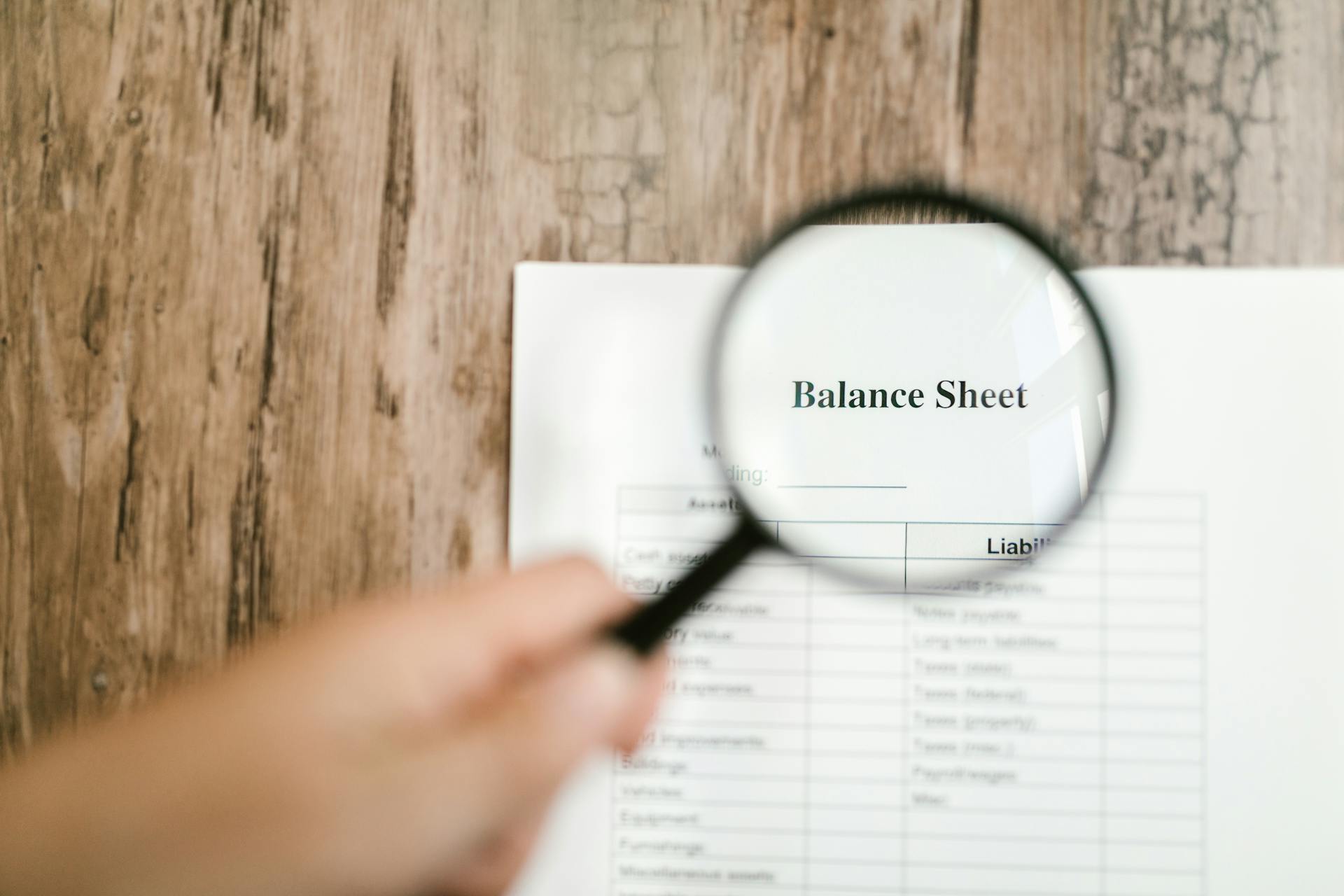Financial Planning For All
If you feel like you’re too early or too late to start investing in your retirement, keep in mind that learning investing strategies can happen at any phase of your career. Throughout your career, there are opportunities to invest more aggressively or opt for lower-risk investments when your income isn’t as high. Keep on reading for practical investment strategies for your retirement.

Investing Isn’t A One-Time Thing
Investing evolves as you age, meaning your priorities in your mid-20s drastically shift when you're in your mid-30s. Just as your tastes in television shows change over time, your financial strategies should adapt to your income, goals, and life stage. Don’t feel too bad if your aggressive approach to investing in your 40s hits a lull in your 60s—your priorities have shifted and that’s okay.
What Determines Your Wealth?
Your wealth is a combination of your savings (financial capital) and future earnings (human capital). When you are young, you have less financial capital but abundant human capital. This stage in life can be exciting because you are exploring different career avenues and investment opportunities.
What Determines Your Wealth?
As you grow older, your human capital converts into financial capital through saving and investing. At this stage, you are entering a period of more financial stability and often higher income. Understanding where you are on this path helps you prioritize and manage risk effectively.
Understanding How Asset Allocation Can Help You
Asset allocation allows you to allocate your assets into more than one investment type, so the adage “don’t put all your eggs in one basket” really applies here. Asset allocation should reflect the current stage of your financial journey, and this can change over time, so you may need to move things around depending on your situation.
Understanding How Asset Allocation Can Help You
When investing in asset classes like stocks (equities), bonds (fixed-income securities), commodities, or real estate, it's important to understand the level of risk each one carries. For example, stock market fluctuations can impact your portfolio differently depending on market conditions. Diversifying across multiple asset classes helps protect your investments, ensuring your portfolio can withstand losses if one area takes a hit.
Understanding How Asset Allocation Can Help You
Regularly reviewing and rebalancing your portfolio helps maintain your intended risk level and investment objectives. If some investments have grown significantly while others have declined, rebalancing ensures your portfolio stays aligned with your long-term financial goals.
Opening A High-Yield Savings Account
Looking for an easy way to boost your savings? Consider opening a high-yield savings account, typically available online, which offers significantly higher interest rates than a standard savings account. Not only do you get regular access to your money, but many online banks offer some of the most competitive rates, making it a great time to take advantage. Think of it like watering a plant—consistent high interest helps your money grow steadily over time.
Exploring Certificates Of Deposits
Another way to earn interest in your savings is to consider looking into certificates of deposits. These are accounts that hold your money for longer, so unlike a high-yield savings account, you can’t access them without a penalty.
Exploring Certificates Of Deposits
You can purchase certificates of deposits for different terms like six months, one year, or five years. These investments offer a high level of security, and if obtained through a federally insured bank, they are protected up to $250,000 per depositor, per ownership category.
Starting A Workplace Retirement Plan
Many workplaces offer a retirement plan where you can start investing a portion of your salary. In the US, a 401(k) (or in Canada, a Registered Retirement Saving Plan (RRSP)) offers employers the opportunity to match what you have decided to contribute to the plan. It’s essentially free money, so make sure to participate in the plan.
Starting A Workplace Retirement Plan
Workplace retirement plans make saving easier by automating contributions once you set your desired amount, with the option to increase them over time. Traditional plans offer tax-deferred growth, meaning you won’t pay taxes until retirement. Alternatively, Roth 401(k)s allow you to contribute after taxes, so your withdrawal in retirement is tax-free.
Investing In Mutual Funds
Mutual funds provide an easy way to invest in a diverse mix of stocks, bonds, or other assets. Popular options, like index funds tracking the S&P 500, often have low or no fees, allowing investors to maximize returns and steadily build wealth.
EFTs Might Be The Perfect Investment For You
EFTs stand for “exchange-traded funds” and hold baskets of securities like mutual funds but are traded throughout the day like a stock. The benefit of EFTs is that there isn’t a minimum investment requirement but usually an associated fee or commission with the purchase of a share.
Paying Attention To Individual Stocks
One of the riskiest investments is individual stocks backed by publicly traded companies. While the risk is high, these investments can be lucrative if you know what stocks are profitable and worth the investment.
Paying Attention To Individual Stocks
Before purchasing individual stocks, you have to understand what your endgame is. Many are drawn to individual stocks for their high-yield, short-term returns, but if you are planning a long-term investment of up to five years, you want to understand the business you are investing in.
Paying Attention To Individual Stocks
Remember: Buying a stock means owning a piece of a business. As the company grows and succeeds, your investment can appreciate alongside its profits, even through market fluctuations. If you're hesitant about the ups and downs of individual stocks, consider mutual funds or ETFs to diversify your portfolio and reduce risk.
The Benefits Of Dividend Stocks
Dividend stocks give you a little bit of everything—the steady income of bonds and the growth potential of regular stocks. These companies pay out cash to shareholders on a regular basis, making them a solid choice if you’re looking for stability. They might not see massive price jumps like high-growth stocks, but the consistent payouts can really add up over time and help you save in the long term.
The Benefits Of Dividend Stocks
One thing to keep in mind is that if you’re holding dividend stocks in a taxable account, you’ll have to pay taxes on the dividends in the year you receive them. On the other hand, stocks that don’t pay dividends are usually only taxed when you sell them.
The Benefits Of Dividend Stocks
Younger investors might like dividend growth stocks—companies that keep increasing their payouts—while retirees may prefer stocks with steady, high-yield dividends for reliable income. If you’re ready to jump in, the easiest way to buy dividend stocks is through an online broker but remember to consider your priorities before investing.
Index Funds Have Great Potential
Index funds are like the autopilot of investing—they track a market index, like the S&P 500 or Dow Jones, so you own a mix of stocks without having to pick them yourself. Instead of paying a fund manager to make moves, these funds simply follow the market, which keeps costs low and returns competitive. They’re a simple, budget-friendly way to grow your money over time, making them a solid choice for long-term investors.
Index Funds Have Great Potential
For young investors who have time to ride out the market’s ups and downs, index funds may be a great option if you're okay with a bit of short-term turbulence. Going all-in on stock index funds early on could set you up for bigger gains down the road.
Money Market Funds For Holding Money
Money market funds are a type of investment that holds short-term, high-quality debt from governments, banks, and corporations. They are designed to be low-risk and provide steady returns, though they won’t grow as much as stocks or other high-return investments.
Money Market Funds For Holding Money
These funds are great for money you may need soon but want to keep in an investment rather than a bank account. Many investors use them to hold cash while waiting for the right investment opportunity. While they are technically investments, their returns are closer to high-yield savings accounts than stocks.
Starting Your Investment Strategy In Your 20s
While it might not seem necessary, investing early can help to ensure you are utilizing each paycheck effectively. Focus on minimizing all high-interest debt you may have and build an emergency fund. If your employer has any sponsored retirement plans, take advantage of them and contribute as much as you can to maximize their match values.
Starting Your Investment Strategy In Your 20s
Building early saving habits can have long-term benefits. Plan to save, if you can, 20% of your paycheck. There are many different investment avenues a young investor can choose, and it may appear intimidating. Try to opt for investing in a low-cost, diversified portfolio or a tax-advantaged account like a RRSP, TFSA, or FHSA.
Investing Strategically In Your 30s And 40s
In this period, many people are buying their first homes or starting families, so not only is this phase of life triggered with a generally higher salary but also higher expenses. The biggest asset here is human capital, so protecting yourself by purchasing life insurance and disability in the event something happens is the first step to effective investment in yourself and those who depend on you.
Investing Strategically In Your 30s And 40s
At this stage of the game, saving strategies should be established and routine at this point. As your pay increases, so does your marginal tax rate, so maximizing your 401(k) or RRSP contributions can be beneficial since they do lower your taxable income.
Investing Strategically In Your 30s And 40s
Since this age range is often marked by higher earnings, higher-risk investments are welcomed. When balanced against future earnings and savings, the risk of investing in volatile markets and potential loss can be rationalized more easily. This can be a benefit especially if you have diverse assets in your portfolio to offset the risk.
Investing Wisely In Your Late 40s And 50s
With retirement on the horizon, the 40s and 50s represent peak earning potential for most people. There is also more pressure at this stage, so refining and re-defining lifelong financial goals are as important as assessing your next investment strategy.
Investing Wisely In Your Late 40s And 50s
Investment risk at this stage of life should be considered carefully, as there may be fewer years of working ahead (if you choose to retire at 65), so considering the full range of investments is necessary. With shorter years of saving, it may be more challenging to adjust for the market volatility as you did in your 30s and 40s, and you may have fewer assets to choose from to make up for the potential loss.
Investing Wisely In Your Late 40s And 50s
Many investors choose to reduce their exposure to equities at this stage. However, if you have 20 more years until retirement, the likeliness of experiencing significant loss in even high-exposure portfolios is relatively low. Based on the above, reassessing your investment strategy now can help you adjust for future retirement and assess your current needs based on future earnings.
Investing Wisely In Your Late 40s And 50s
Everyone has a unique story, so your investment approach should be based on how well or not well you’ve reached your financial goals at this age. If you have hit all your saving targets and even reached above your initial goal, you may be more comfortable accepting more risk at this age. However, if you have not met your savings goal, a poor stock decision may negatively impact your retirement plans. It’s best to proceed with caution.
Investing Wisely In Your Late 40s And 50s
If you have a mortgage, sometimes the interest rate is higher than what you expect to make after taxes. If this is the case, think about putting more money into your savings to offset this cost. It’s important to factor in liabilities like a mortgage as defaults on payments can be costly.
Investment Strategies For Your 60s And Beyond
Most investors in their 60s and 70s are either partially winding down their employment or fully retired, resulting in less take-home income. Reducing investment risk may involve shifting more of your portfolio toward bonds and cash-like assets. This approach helps safeguard your savings while still offering some growth potential. However, taking on a small amount of risk can be beneficial, as it may help your savings grow to counter the effects of inflation and prevent low account balances.
Investment Strategies For Your 60s And Beyond
Exploring permanent life insurance, which can be more costly than term insurance, is beneficial since it can guarantee a payout to your heirs upon your death. These payouts can help float the cost for things like executor fees and funerary arrangements. Talking with an insurance advisor will help you see the bigger picture of this insurance plan.
Investment Strategies For Your 60s And Beyond
Okay, you’ve been saving throughout your adult life, and now you want to maximize those savings in retirement. What’s the best way to do this? Well, in the US, you can access your 401(k) as soon as you hit 59 ½ years old. Similarly in Canada, many people choose to take their government pensions right away—but this may not always be the best strategy. You can start receiving a reduced Canada Pension Plan (CPP) or Quebec Pension Plan (QPP) as early as age 60.
Investment Strategies For Your 60s And Beyond
Did you know you can postpone your pension payouts? In the US, you can wait to dip into your 401 (k) till you’re 73. In Canada, you don’t have to take CPP/QPP and federal Old Age Security (OAS) pension payments until age 70. By delaying your payouts, you would receive higher monthly payments. This may be a worthwhile option if you've calculated that your life expectancy makes delaying payments financially beneficial. The next slide will help with that calculation.
Investment Strategies For Your 60s And Beyond
Many people consider their break-even age—how long they need to live for delaying benefits to pay off. If you think you’ll live beyond 74, it’s generally better to start your pension payouts at 65 rather than 60. If you expect to reach 82 or older, deferring until 70 is even smarter. Of course, this is just a rule of thumb, and a financial advisor can help you weigh other important factors.
Investment Strategies For Your 60s And Beyond
You can’t escape taxes in retirement, but you can manage how much you pay. Instead of waiting for the maximum age when the government requires pension withdrawals, it often makes sense to start taking money out sooner. This helps spread your taxable income over more years, potentially lowering your overall tax bill. A popular strategy is to withdraw just enough so that your income stays within the lowest tax bracket.
You May Also Like:
5 Ways To Start Investing With Little Money
Tricks To Survive On A $2,000 Budget
Retirement Milestones: How Much To Save And When














































